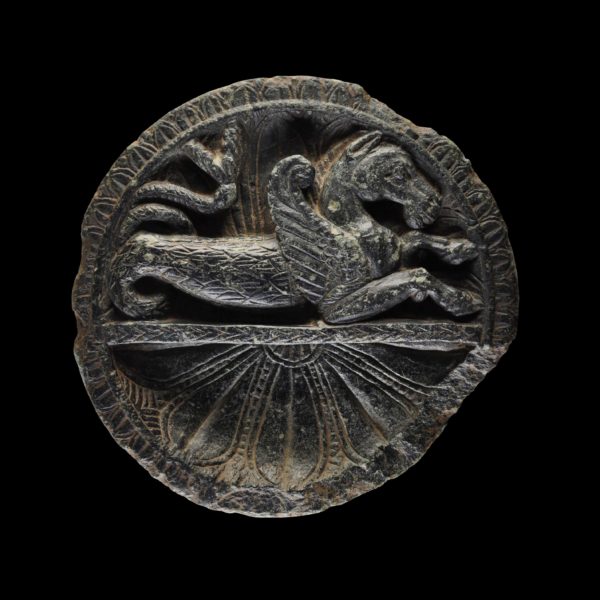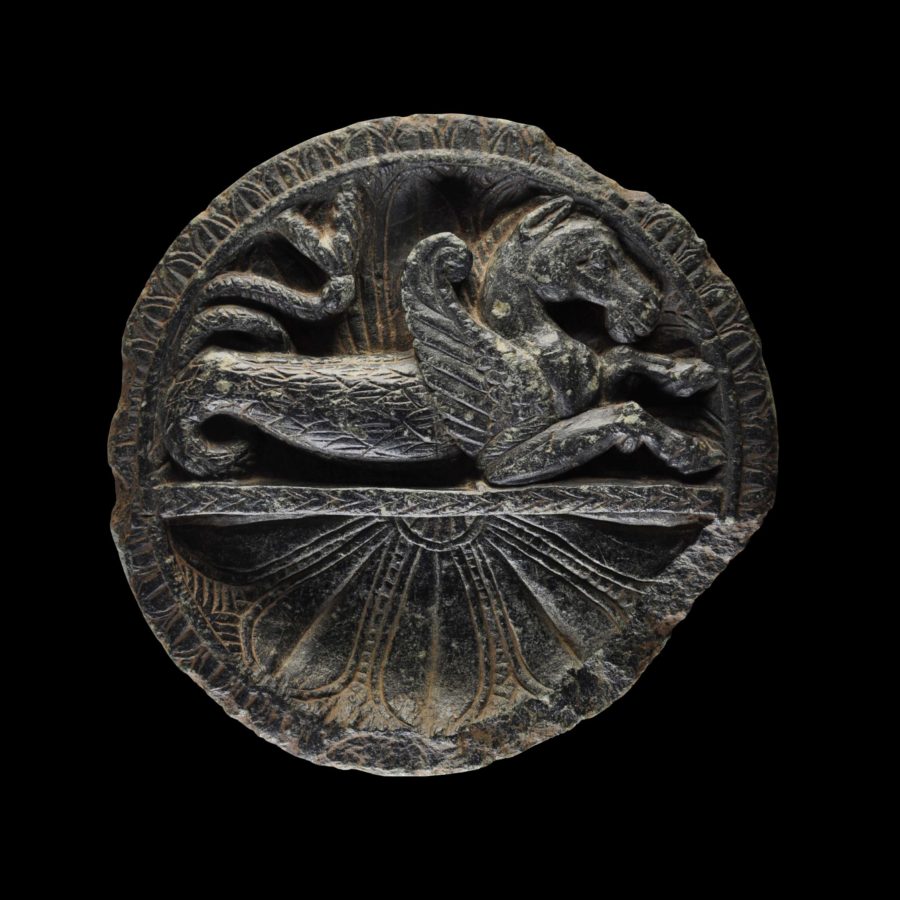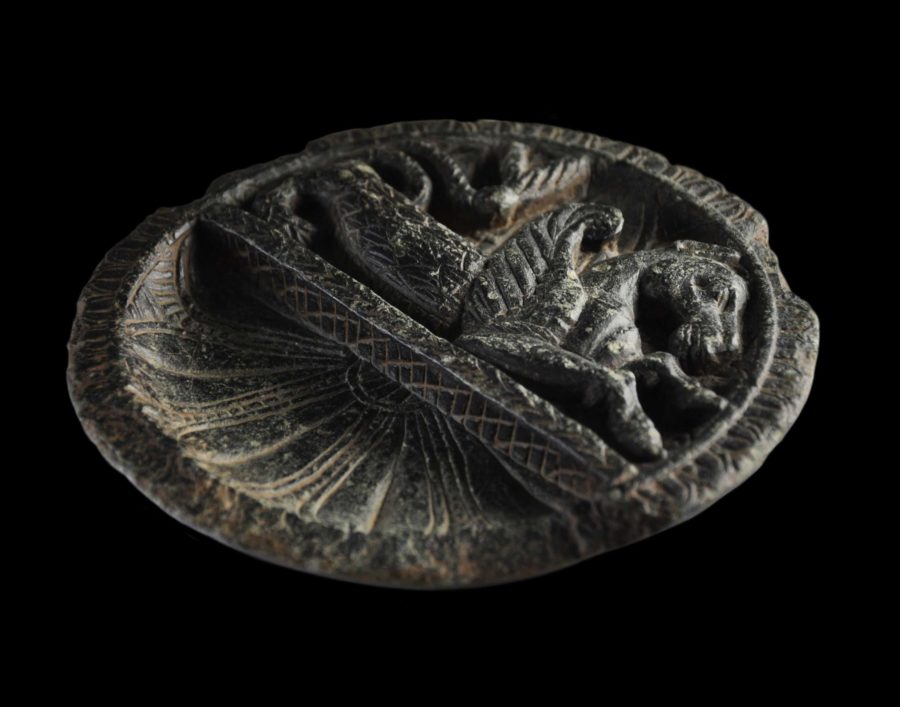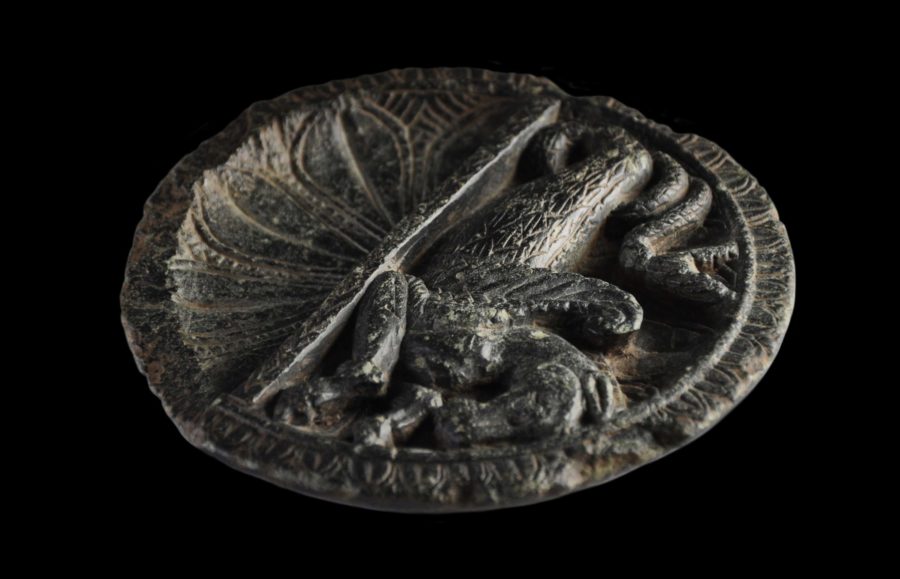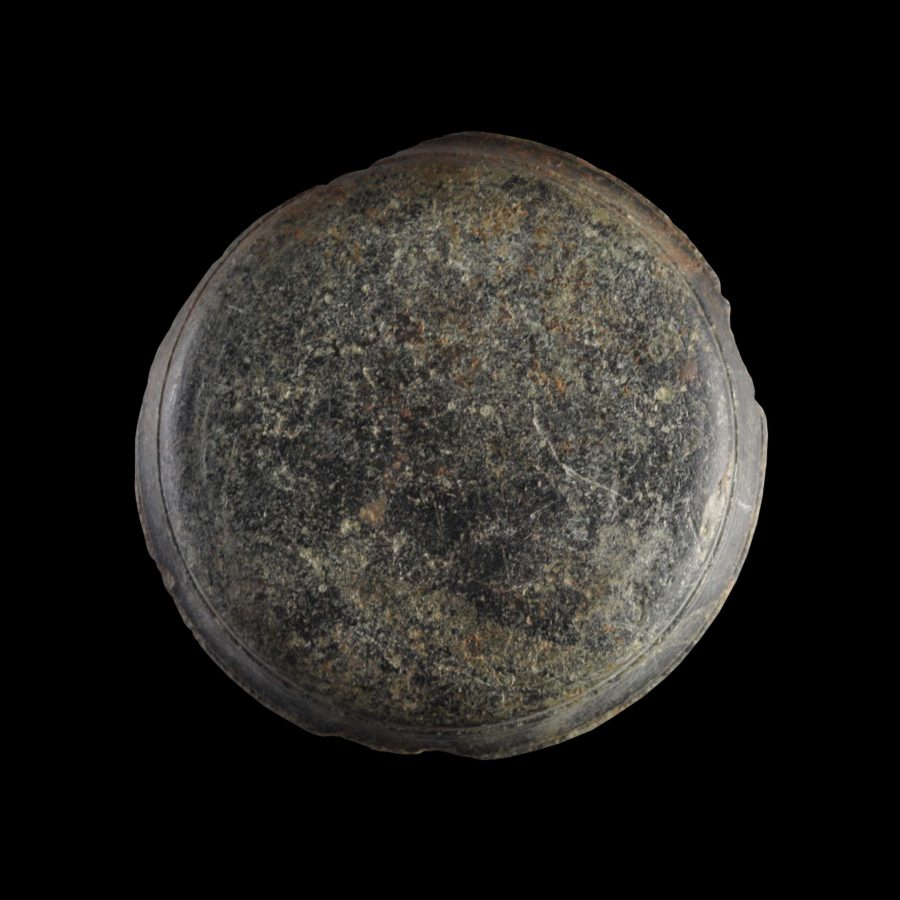This dish carved from grey schist is part of a group of such dishes thought to date to around the first century BC through to the first century AD and belonging to the early Gandharan period of what is now northern Pakistan. Each varies in size slightly but generally, they fit in or over the palm of the hand.
Seven related dishes in New York’s Metropolitan Museum of Art are illustrated in Behrendt (2007, p. 9-11).
These dishes reflect contact with the Hellenistic (early Greek) world, and so it is with the example here.
The example here is carved with a hybrid fish and winged horse Pegasus-type creature in the top half, and more of a well in lower half which is carved with lotus petals. The outer rim is flattened and this has been carved with petal motifs.
Behrendt (2007, p. 10) suggests that such dishes might have been used in connection with the ritual offering of wine. Another possibility is that they, or at least our example, had a more utilitarian purpose – possibly for mixing kohl, which ladies (and possibly men) used to darken their eye lids.
Gandhara was an ancient region in the Peshawar basin in the north-west of the Indian subcontinent, corresponding to present-day north-west Pakistan and north-east Afghanistan. During the Achaemenid period and Hellenistic period, Pushkalavati served as its capital which equates to modern-day Charsadda. Later the capital city was moved to what is now Peshawar. Gandhara was at the crossroads of Asia and connected land trade routes that linked Asia with the Middle East and Europe. The local culture evolved and was shaped by outside influences accordingly. Buddhism thrived until the 8th or 9th centuries, after which Islam began to become more prominent. The colonial British administration conducted archaeological surveys and excavations in the area in the early 20th century and from that period, small items such as this found their way back to the UK and into colonial-era collections.
The example here is in a stable condition. In keeping with other known examples, it has some ships and other losses. It has good, varying patina and wear.
References
Behrendt, K.A., The Art of Gandhara: In the Metropolitan Museum of Art, Yale University Press, 2007.
Harle, J.C. & A. Topsfield, Indian Art in the Ashmolean Museum, Ashmolean Museum, 1987.


